Safe Trailer Towing Made Simple
Your Go-To Guide for Safe & Easy Trailer Towing!
Why Safe Towing Matters
Unsafe towing practices can lead to accidents, damage to vehicles, and even legal fines. Caravans, trailers, and box trailers all require unique towing setups, weight distribution, and handling techniques. Missteps like improper weight distribution or incorrect hitch connections can result in:
- Trailer sway
- Loss of control
- Excessive wear on your towing vehicle
- Potential breakdowns or accidents
Learning how to set up your trailer and follow road regulations can prevent these risks, ensuring a safer journey for everyone.
Trailer Types Covered
1. Car Trailers
Car trailers are commonly used to transport vehicles, whether for personal projects or professional purposes. Due to their heavy loads, car trailers require precise weight distribution and secure tie-downs. Proper braking systems are also critical.
2. Enclosed Trailers
Perfect for transporting tools, furniture, or delicate goods, enclosed trailers keep items protected from the elements. However, their larger surface area can be affected by wind resistance and crosswinds, making proper towing techniques vital.
3. Box Trailers
Box trailers are versatile and perfect for carrying smaller loads, such as garden waste or equipment. Although they’re typically lighter, they must still be balanced correctly to prevent sway or instability on the road.
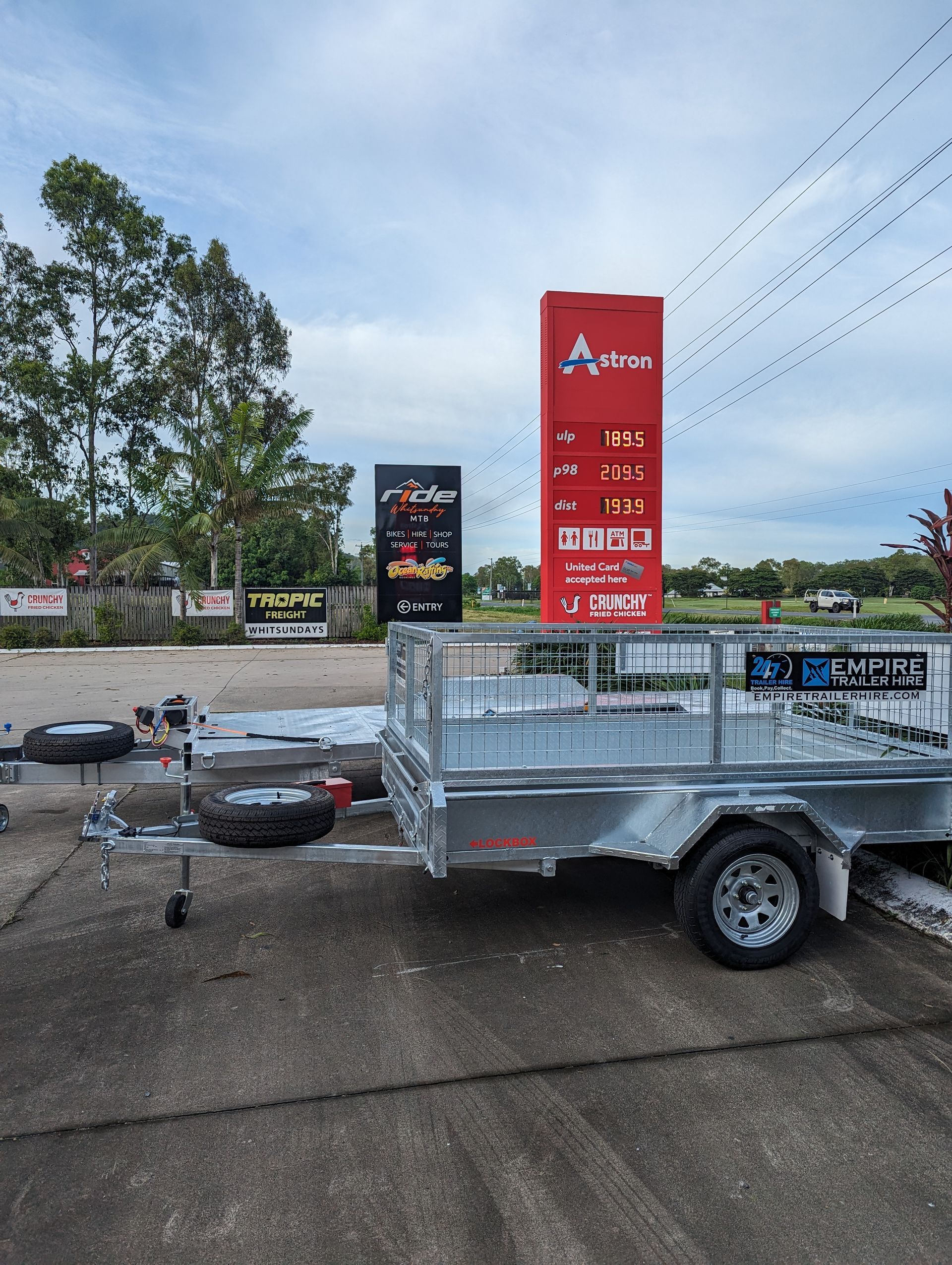
Key Components of Safe Towing
1. Know Your Weights
Understanding towing weights is fundamental for safe towing. Here are the key terms to know:
- Tare Weight: The unladen weight of your trailer.
- Gross Trailer Mass (GTM): The total weight supported by the trailer axles.
- Aggregate Trailer Mass (ATM): The trailer’s maximum weight, including the load and tow ball download.
- Gross Combination Mass (GCM): The combined weight of your tow vehicle and trailer, fully loaded.
Always check your vehicle’s and trailer’s compliance plates to ensure you don’t exceed these limits.
2. Hitching Up Correctly
The connection between your vehicle and trailer is crucial:
- Tow Ball Selection: Use the correct size tow ball, typically 50mm for most trailers in Australia.
- Safety Chains: Attach safety chains securely, ensuring they’re crossed to support the trailer if the hitch fails.
- Breakaway Systems: For trailers over 2,000kg, a breakaway system is mandatory to activate the brakes if the trailer detaches.
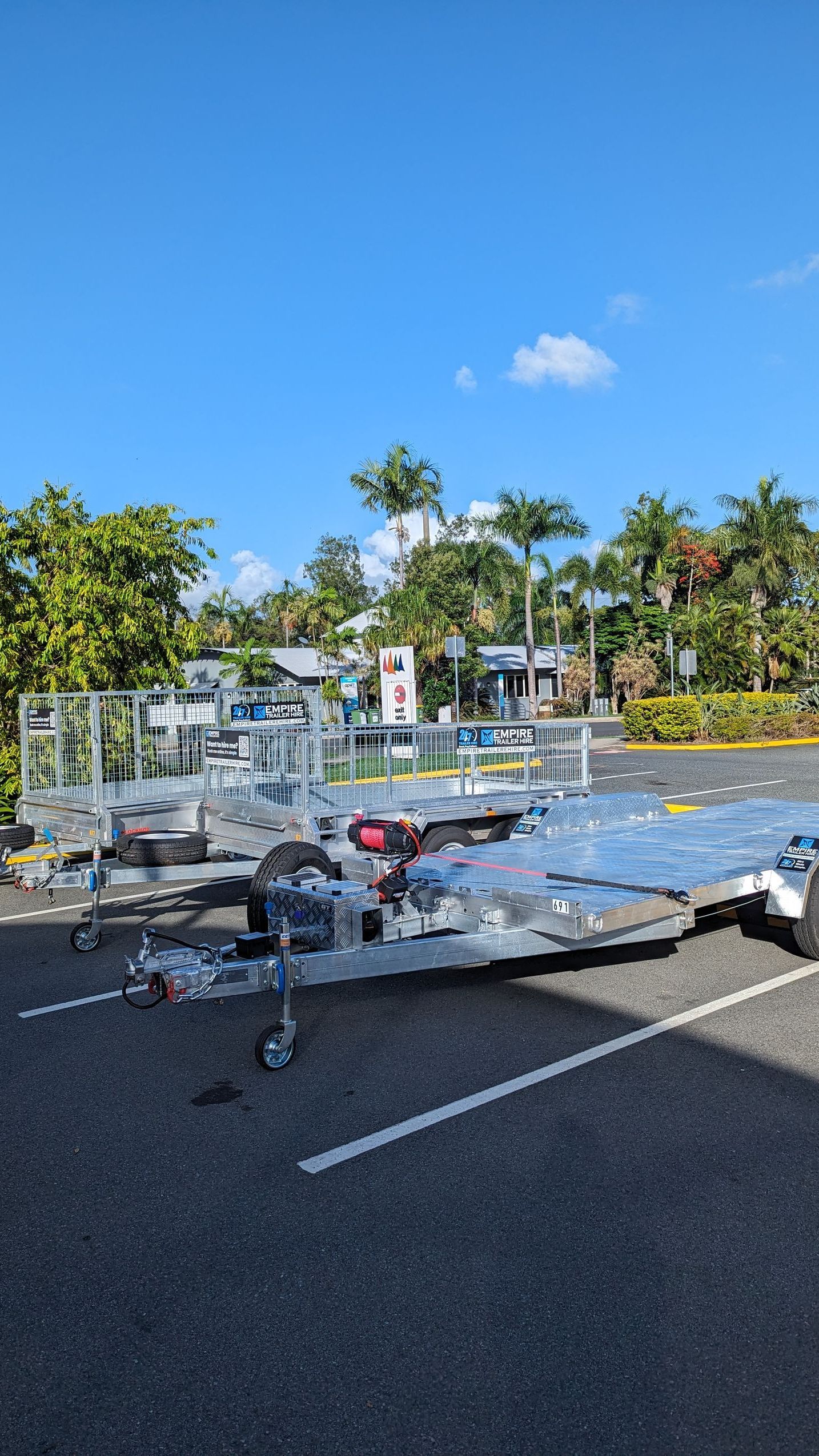
Ready to Tow? Book a Trailer with Us Today!
Whether you need a reliable car trailer, secure enclosed trailer, or versatile box trailer, we’ve got you covered. Our trailers are maintained to the highest standards and available 24/7 for your convenience.
3. Load Distribution
Unbalanced loads are one of the leading causes of trailer instability:
- Place heavier items over the axles to reduce stress on the hitch and prevent sway.
- Avoid loading too much weight at the rear, as this can lift the tow ball and reduce steering control.
- Maintain about 10-15% of the trailer’s weight on the tow ball for optimal balance.
4. Brake Systems
- Override Brakes: Found on lighter trailers; activated by the trailer’s momentum when the towing vehicle brakes.
- Electric Brakes: Required for heavier trailers; controlled via an in-cabin brake controller to adjust braking force.
Ensure brakes are tested and adjusted for different load conditions.

5. Tyre Maintenance
Trailer tyres are often overlooked but play a critical role in safe towing:
- Check tyre pressure regularly to match load requirements.
- Inspect tyres for wear, cracks, or bulges.
- Use the 4/6 psi rule to ensure optimal inflation under load.
6. Towing Mirrors
When towing wider trailers like enclosed trailers, ensure you have proper towing mirrors installed. These provide a clear view of your trailer and the surrounding traffic, reducing blind spots and improving lane-changing safety.

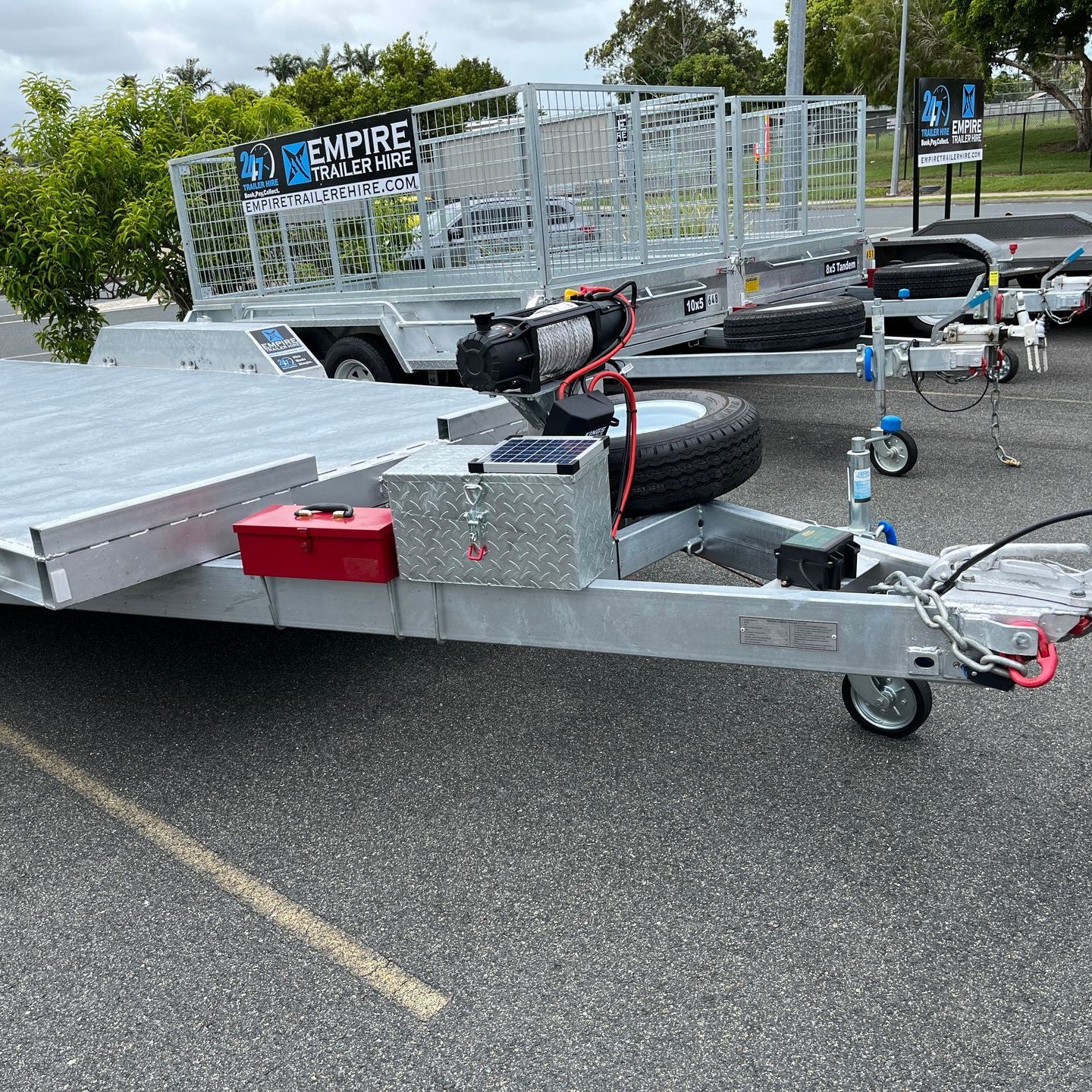
Driving Tips for Safe Towing
- Plan Ahead: Know your route, including rest stops, narrow roads, and low-clearance bridges.
- Adjust Your Speed: Towing requires slower speeds for better control and braking. Stick to legal towing speed limits.
- Leave More Stopping Distance: Trailers increase your stopping distance, so maintain extra space between you and the vehicle ahead.
- Watch for Sway: If the trailer begins to sway, reduce speed gradually and avoid sudden steering corrections.
- Use Your Gears: Shift to lower gears when descending steep hills to reduce strain on brakes.
Legal Requirements for Towing in Australia
- Licensing: Ensure your driver’s license class allows you to tow your specific trailer type.
- Load Limits: Never exceed the towing capacities specified by your vehicle and trailer manufacturer.
- Lighting: Ensure all trailer lights are functional and compliant with Australian road rules.
- Number Plates: The trailer must display a clear and legal number plate.
Common Towing Challenges and Solutions
Challenge: Trailer Sway
- Solution: Ensure proper weight distribution, adjust tyre pressures, and reduce speed. Install sway control devices if necessary.
Challenge: Poor Braking Performance
- Solution: Inspect and adjust brake controllers before your trip. Ensure your vehicle’s braking system is capable of handling the extra load.
Challenge: Difficult Reversing
- Solution: Practice reversing with your trailer in an empty lot. Use small steering adjustments and seek assistance when needed.
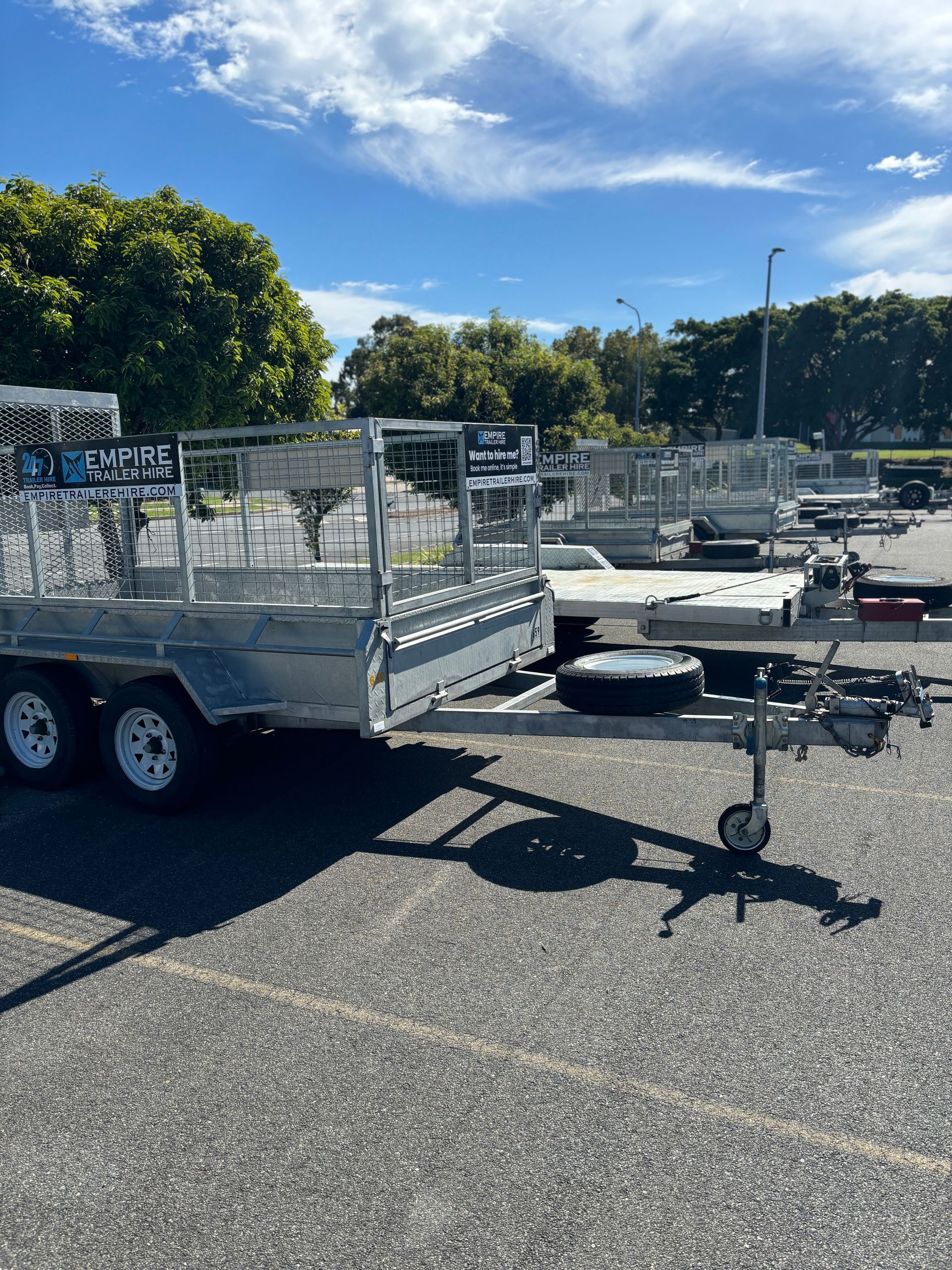
A Business That Is Trusted By Many
Our reputation speaks for itself. With over 500 glowing 5-star Google reviews through out our 14 locations , our customers consistently praise our services. They particularly love our innovative booking and collection system, which offers a seamless and efficient process. Join the ranks of our satisfied customers and experience the Empire difference.


